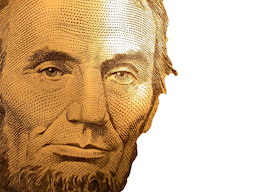
January 31, 2019

Abraham Lincoln
Source: Bigstock
DALLAS—Whoever took the photo of the Covington Catholic High School kid holding that painful smile during the face-down with the Omaha tribal elder at the Lincoln Memorial should receive the Pulitzer Prize and the photograph itself should go into the Smithsonian Institution as a portrait of America in 2019.
The title of the photography should be E Pluribus Chao, the opposite of E Pluribus Unum.
The only thing that would have made the photo better is if it had included one of the Black Hebrew Israelites.
I know this group well, or at least I know their street habits well, since for years they occupied a platform in Times Square and preached their religion of black supremacy. They are formidable provocateurs, every bit the equal of their counterparts in the Ku Klux Klan and the Aryan Brotherhood. It’s not a stretch at all to believe that, when they encountered a group of well-scrubbed white high school kids, they taunted them as “School shooters!” and “Incest babies!” because any group based on bloodline privilege will have loose-cannon flamethrowers on its fringes.
Unfortunately, the Covington students had not learned the part of the New Testament about turning the other cheek, and so the Catholic boys responded with their school cheers in an effort to drown out the Israelites. (Good Catholic kids all, they requested permission from their teachers before they started cheering.)
Meanwhile, the Omaha tribesman sees a situation developing between two races and two religions and he steps in with more noise, thinking that a little Native American drumming will somehow defuse an already raucous situation.
And that’s when the smile occurs. The smiling/smirking kid was neither a saint nor a sinner, he was merely doing what everyone else was doing that day—expressing his moral superiority. He was being a peacemaker, he said, but he also betrayed himself when he said, “I wanted him to know that this was the most he was going to get out of me.” In other words, he resented the drumming. By fighting it with a smile, he thought he was doing the Christian thing.
So the Black Hebrew Israelites felt morally superior to the white boys.
The white boys chose to express their own moral superiority by singing cheerful songs.
The Native American chose to express his morality by being the peacemaker between two angry groups.
And the smiling kid wanted to be the hero who would stand up for his school in a peaceful Christian way.
Each group was sending out signals to the other groups: Ours is the high road, you live in ignorance. I mean, you don’t go to a demonstration in the first place unless you want to make a public point, whether that point be opposition to abortion, defense of minority rights, or pride of indigenous people. But the remarkable thing about this particular moment in history is that none of the groups knew what the others were doing. The Omahas were judged for their drumming, interpreted as aggressive. The Catholic kids were judged for their “Make America Great Again” hats. (I don’t know what you would normally expect from schoolkids, but when I went to Washington as a kid, we bought all kinds of souvenirs that had President Johnson’s likeness on it, at a time when he was very unpopular with the public because of the Vietnam War. A kid’s first instinct is to buy a hat, a shirt, or a button.) And the Black Hebrew Israelites were judged for the obscene and tasteless slurs of a few of its members. I really doubt that most people had even heard of the Black Hebrew Israelites before that day.
Here in one moment we have identity politics, the pride of being righteous outsiders (all three groups), and the belief that some Other is about to destroy the country.
We would understand the whole thing better if we admitted that all three groups had mixed motives, that the loose cannons (the tomahawk chopper, the “go back to Europe” guy) represent the kind of insecure show-offs who are part of any organization, and that posturing as “peacemakers” or “truth-seekers” doesn’t get us anywhere.
Anybody involved in the fracas would have done better to turn back to the Lincoln Memorial that loomed right there above them and read the words on its walls once more:
With Malice Toward None, With Charity for All.
That phrase, taken from Lincoln’s Second Inaugural Address, was all about “binding up the nation’s wounds.”
Listen to Abe, please.